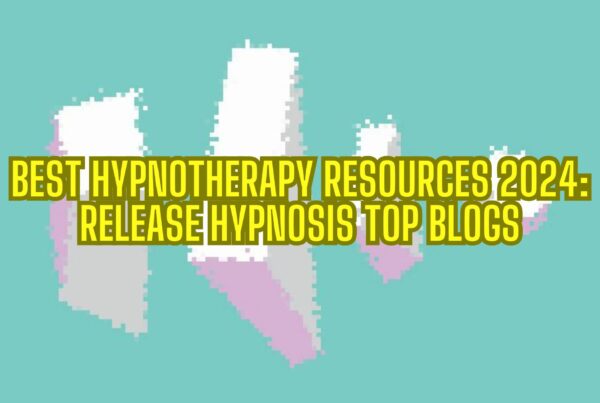How to stop the negative thoughts from taking control
Those Negative Thoughts
To be human is to often be plagued with negative thoughts that hold us back, make silly decisions, or make the incorrect meaning out of something that was said or that happened.
We go through life experiencing events which then enter through our senses, followed by a filter of our beliefs, values and past experiences, and come to a meaning that has been made that creates our very reality. You would’ve heard the saying that ‘perception is reality’, and this is exactly why.
Perception is Reality
Interesting thing is that if we change the way we think, we begin to change our very reality as a response.
For example, the anxiety that you experience is often the product of an overactive mind creating a series of worst case scenarios that are so vividly imagined, your body responds as if they were really happening. In a sense, you are creating a form of negative self-hypnosis that then sends you spiralling. What if you didn’t think that way though? What if you went through an event without thinking the worst, or at least became aware of the thinking you were having instead of the thought?
Negative Thinking Keeps You Small
What about those times where we tell ourselves that we’re not good enough, or that we can’t do something? What about those times where you’ve held yourself back because we believed we’re not smart enough, or attractive enough, or just outright not good enough? All that negative thinking being generated inside that stops you from doing those things that really give your life meaning, purpose and value.
Your Mind Is Not Always Your Friend
The mind is always going to make meaning from the events and circumstances that happen around it, and to be honest, your mind is not always your friend.
If I asked you if you’ve ever had thoughts where you beat yourself up, chances are that you would say yes. Trust me, you’re not alone there.
Most people will go through situations where they are experiencing doubt, fear, frustration and a whole range of uncomfortable feelings and thoughts provoked by their own inner critic. It can be confusing as to why this inner voice insists on beating us down, and yet for many of us, we’ve lived to accept this inner nasty as being part of our reality. It’s like there is this bully ‘roommate’ living in our mind that takes pleasure in making us feel crap about ourselves and prevents us from being the best version of ourselves.
Our Thoughts Are Not Reality
Yet, what it tells us is often not reality. It is a forward projection into what could go wrong, or a rumination about what we should’ve/could’ve done. It is, ultimately, just ‘thinking’ and just ‘thought’.
Wouldn’t it be nice to sometimes just tell that inner critic to bugger off?
Where Are ‘The Thoughts’?
Often when people come to see me, they tell me that they have all their thoughts going on and that ‘their mind never stops’.
I’ll often ask them where these thoughts come from, and more often than not they’ll point at their head to indicate their brain.
I’ll let them know that this is where they might receive them, but it isn’t where they come from. How often have we had thoughts that have felt like they’ve come out of nowhere and just landed in our mind? I certainly know I’ve had that experience over time.
It can often feel, ironically, like our mind has a mind of its own.
Stopping The Negative Thoughts?
For many people, they often go about trying to ‘stop the thoughts’ and they spend so much energy in pushing away the thoughts that seem to naturally come.
Perhaps the strategy needs to be different. Perhaps it isn’t so much about trying to stop the thoughts, but how do we engage with them differently instead.
If we can begin to recognise that our thoughts are just thoughts and not facts, it can often help to take the sting out of the thought and reduce the power that we give to them.
What Is Reality?
As I mentioned earlier in the article, ‘perception is reality’.
What we focus on is the reality we are going to get. If you want to bring your focus on how bad your life is and everything that is wrong with it, what type of life do you think you’re going to get?
Of course, it isn’t going to change that life has challenges however life is always going to have challenges. By focusing on how bad those challenges are though, it does nothing to prevent the challenges but it does make the challenges you experience feel so much worse.
There are those people who seem more than happy to focus on just how bad their life is, and then complain constantly about how bad their life is. They’re so busy focusing on what is going wrong, they’re missing the moments when it seems to be going right.
Then there are those people who have managed to focus on the things that can shift their reality for them. They focus on their values and what is important to them, which drives their very actions. They focus on what they’re grateful for so that they know that they’re always blessed. They focus on acceptance so that they can reduce the struggle with what is outside of their control and place their focus where it needs to be. They focus on self-compassion and resilience so that they can get up each day and treat it like a new start.
The mindset you bring into your focus will shape the reality around you, and your mindset is made up of the quality of the thoughts you have.
What Is ‘Defusion’?
Let’s try a really simple experiment.
Can you bring up a negative self-thought about yourself where you really beat yourself up?
Don’t worry, we won’t be here long but in order to highlight this, you need to access a thought where you are allowing your inner critic to run rampant.
Have one? Good.
Now, just focus for a moment on what that inner critic is saying to you. What is the thought you are having?
Let me guess – it is most likely in your own voice, right?
Now, I wonder if you could change the voice from your voice to Daffy Ducks? What happens?
Do you notice a shift going on? Did it bring a smile to your face or even a laugh? I hope so!
I don’t mean for this request to belittle what your mind is telling you. What I am doing here though is changing how you engage with the thought. For most people, changing the voice changes the way in which they engage with the thought. It doesn’t feel as serious any more. Instead, many laugh and begin to recognise that it is just their mind doing its thing.
What we are ultimately doing here is developing the skill of becoming an observer to our thoughts. Instead of believing everything our mind tells us and accepting it as fact, we are creating a little distance from the thought and in that space, we can begin to tap into our values about what kind of person we want to be and use that to help guide our actions.
How Do We Use ‘Defusion’?
I’ve sometimes had people here argue with me that what their mind is telling them is ‘true’ though.
In response to this, I often say that it doesn’t matter if the thought is true or false, or good or bad. Instead, we need to ask ourselves this question; ‘is this thought useful? Is it taking us towards the kind of person we wish to be and the things we stand for, or is it taking us away from it?’
The simple fact is this; your mind is using all of this internal imagination power to create this negative experience for you. If your mind is going to do that, we may as well hijack this same technology to create a more comfortable or even entertaining experience for us.
Your mind relies upon pattern repetition to create habits and allow the ability to predict what will happen next. This includes your thinking. As you repeat a thought over and over again, you’re creating a neural pathway that supports that pattern thinking. Defusion helps us to create new neural pathways that will help us to step away from the kind of thinking that isn’t helpful and towards the thinking that will allow us to achieve the things that are meaningful and values driven.
Surely It Can’t Be That Simple?
I was once working with a client who, after hearing about defusion exercises, said to me, ‘surely it can’t be that simple?’
Again, I reminded her this this is a thought, and this is the mind trying to trick her into believing that it has to be more complicated than that because the thoughts and feelings felt overwhelming.
As we began to work with that thought, and began to recognise that it was just a thought, she began to recognise the power that came from stepping back from this kind of thought and stepping towards the thoughts that offered her greater options, choice and flexibility.
What Other Defusion Exercises Exist?
There are several defusion exercises out there and it isn’t too hard to take the basic concept and to create your own.
Here are some examples of other defusion exercises that you may wish to be curious about and explore.
1. Name it to tame it. This exercise involves naming the uncomfortable thought, feeling, or sensation you’re experiencing. For example, you might say to yourself, “I’m having the thought that I’m not good enough.” Naming your experience in this way can help you distance yourself from it and recognize that it’s just a thought, rather than a reflection of reality.
2. Notice and describe. In this exercise, you simply notice and describe the uncomfortable thought, feeling, or sensation you’re experiencing. For example, you might say to yourself, “I’m noticing a feeling of anxiety in my chest and a racing heart.” Describing your experience in this way can help you become more aware of it and gain some perspective on it.
3. Talk to the thought. In this exercise, you imagine having a conversation with the uncomfortable thought or feeling. You might say to it, “Hello, anxiety. I see you’re here again. What do you want to tell me?” This can help you recognize that your thoughts and feelings are not you, and that you have the choice to respond to them in different ways.
4. Put it on a billboard. In this exercise, you imagine that the uncomfortable thought is written on a billboard in front of you. You might say to yourself, “I’m noticing the thought, ‘I’m not good enough,’ on the billboard in front of me.” This can help you distance yourself from the thought and recognize that it’s just a thought, rather than a reflection of reality.
5. Float downstream. This exercise involves imagining that your uncomfortable thoughts are like leaves floating downstream. You might say to yourself, “I’m noticing the thought, ‘I’m not good enough,’ floating downstream.” This can help you recognize that thoughts come and go, and that you don’t have to get caught up in them.
6. Write it down. In this exercise, you write down the uncomfortable thought or feeling you’re experiencing. This can help you distance yourself from it and gain some perspective on it. You might try writing a letter to the thought or feeling, or simply writing it down on a piece of paper and then tearing it up or throwing it away.
Where Does Mindfulness Come Into This?
If any of my clients are open to it, I always recommend exploring the developing of a mindfulness practice.
There are a couple of reasons for that.
The first benefit is that mindfulness can help people to develop an awareness of this moment. This negative thinking will often take us into the past (negative experiences) or into the future (negative expectancy) instead of THIS moment where you are, more often than not, just experiencing the feeling of the thought.
The second benefit is that it helps to train your mind as to which distraction it is going to engage with; the distraction you want it to focus on (often the breath) or the thought that is currently hijacking the mind. This is the same as going to gym and building the muscle strength in your body; you’re building mind muscle instead.
The third benefit is that it helps to develop that observer self that can look at the thought, notice it, acknowledge it, even thank it, but not get hooked by it and allow it to create your reality.
I have written more about this in my article on the mindfulness toolkit, but I’m sure you can see from the points above as to why a regular mindfulness practice can be beneficial in ensuring you’re developing an ability to just be in the moment and to sit with the thoughts that arrive without having to give them power.
Download your FREE Mini-Mindfulness Meditation by simply clicking here.
Show Yourself Compassion
Lastly, in those moments where the temptation is there to beat yourself up with the negative thinking, developing the ability to offer yourself some self compassion can be truly useful.
When we’re beating ourselves up with self perceptions that are just cruel and unfair, being able to treat ourselves in the same way we hope our best friends would treat us can help us to move on from the negative thinking and to move on.
I’ll write an article on this in the near future as it is worth exploring self compassion in all it’s glory.
Stop The Negative Thoughts From Taking Control
Defusion exercises are a key component of Acceptance and Commitment Therapy (ACT) that are designed to help individuals distance themselves from uncomfortable thoughts, feelings, and sensations.
Examples of defusion exercises include naming it to tame it, noticing and describing, talking to the thought, putting it on a billboard, floating downstream, and writing it down.
Defusion exercises can be helpful for anyone who struggles with uncomfortable thoughts, feelings, and sensations, and can help them gain some distance from these experiences and recognize that they are just thoughts, rather than reflections of reality.
Book Your FREE 20 Minute Consultation With Release Hypnosis NOW!
You may also like to read:
When Fear Takes Over – a Look at Phobias
The Top 3 Limiting Beliefs That Hypnotherapists Have Around Technology
Isn’t It Time To Tell That Smoking Habit To Butt Out Of Your Life?
How To Get The Best From Your Online Hypnotherapy Session








